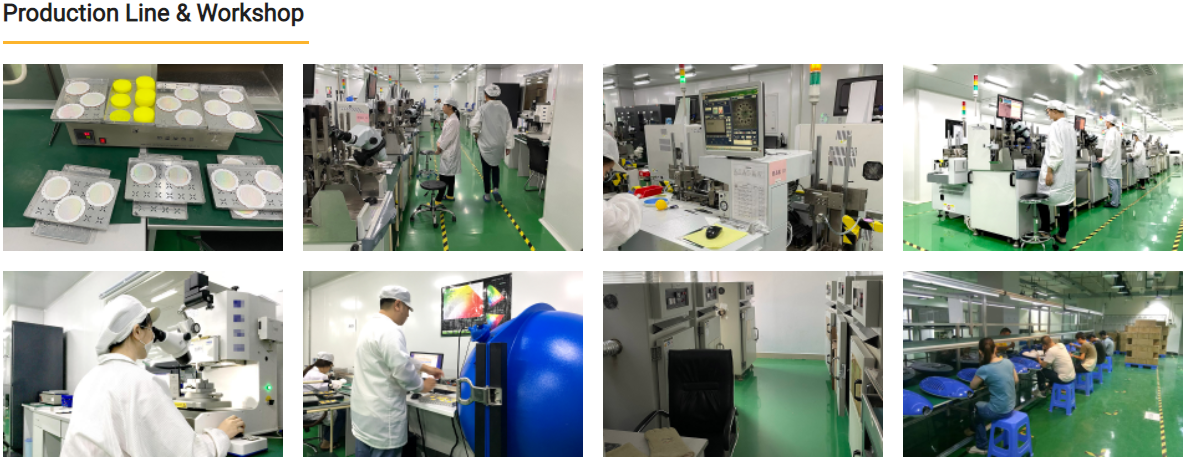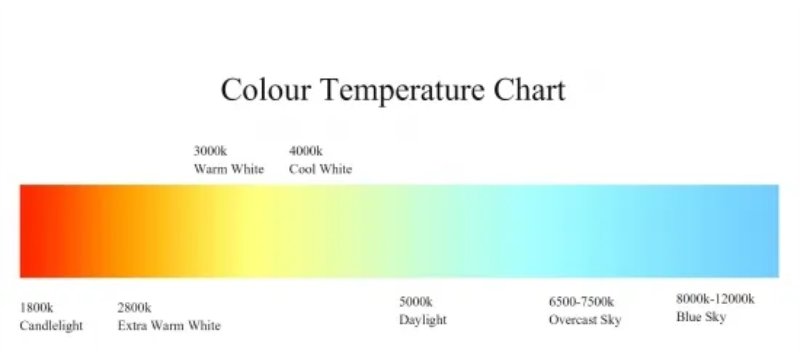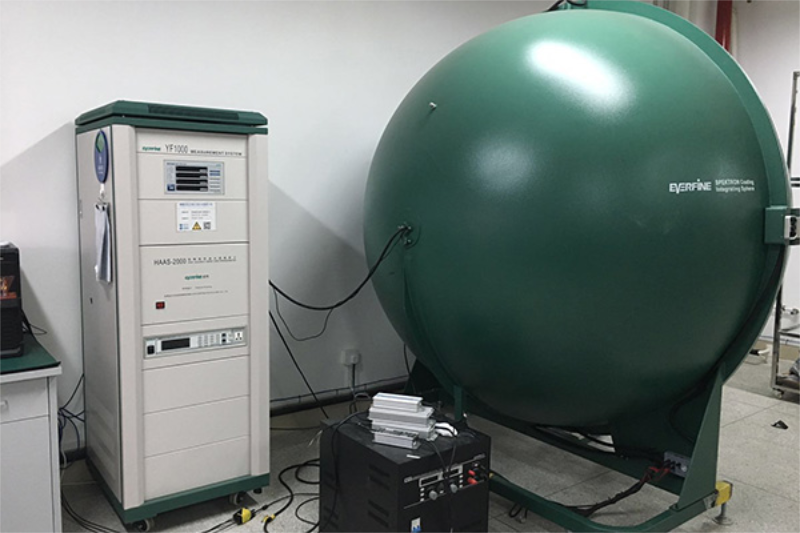In the 1990s, LED technology made great strides, not only surpassing incandescent light efficiency and light intensity at candlelight level, but also covering the entire visible spectrum from red to blue. This technological revolution from indicator light level to more than universal light source level LED to a variety of new applications. Such as car lights, traffic lights, outdoor full-color large display and special lighting sources. Become a new generation of light source rookie.
Production Line & Workshop
LED light source parameters
1. the color temperature
Conventional color temperature: Warm white light (WW) 2700-3200K, natural light (NW) 4000-4500K, positive white light (PW) 6000-6500K, cold white light (CW) 7000-7500K Red, green, blue and other single color lamp bead chang can also do.
the color temperature
2. Voltage and current
Voltage and current are also important basic parameters of LED bulb lamp. Different countries in the world have different grid voltages and the voltages used in certain situations. The commonly used voltage is 12V, 110V, 220V, 85V-265V. Current is divided into input current and lamp current. First: input current: can be tested with the power supply, different power is not the same, subject to the instrument. Second: lamp current: general high power is between 300mA – 320mA-. Current has a great influence on the light decay of LED lamps, so the stability of current is also very important. Bead current and voltage can not be too large, otherwise it will seriously affect the life of the LED lamp.
3.. Luminous flux
The light flux is mainly determined by the light efficiency and power of LED bulb lamps. It is generally measured by integrating spheres.
Intergrating Sphere
3. intensity of illumination
Illuminance general lighting designers will consider more, under normal circumstances, we consider very little. The unit of illumination is the Lux, or Lux, which can now be shortened to Lx. 1 Lm The luminance produced when the luminous flux is evenly distributed over a surface of 1 m ². Illuminance is usually measured by illuminance meter, which is simple to use and cheap to buy. When there is no integrating sphere system, illuminance meter can be used to measure as some reference.
4, light failure
In popular terms, it refers to how much the brightness of the bulb decreases after being used for a certain period of time. The main factors affecting LED light failure are heat dissipation and current. Current instability, poor heat dissipation effect, light decline will be very serious. If the LED bulb is using isolated constant voltage + constant current LED drive power supply, car aluminum lamp shell heat dissipation, the light decline is controlled within 2‰.
5. color difference
Chromatic aberration is the inconsistency of color temperature. Generally, warm white light (2700-3200K) will take chromatic aberration into account. Warm white light is what we usually call yellow light. Sometimes when we buy two energy-saving lamps with the same brand and the same power, and light them in the same environment, we will find that one light color is brighter and the other light color is darker. his kind of situation is chromatic aberration. In some cases, chromatic aberration is considered unacceptable.
6. Color rendering
The degree of light source to the color of the object itself is called color rendering, that is, the degree of color fidelity; The color rendering of the light source is indicated by the color rendering index, which indicates the color deviation of the object under light compared with the reference light (sunlight), and can reflect the color characteristics of the light source more comprehensively. The light source with high color rendering performance is better for color, and the color we see is close to natural color, while the light source with low color rendering performance is worse for color, and the color deviation we see is larger. The color rendering index (CIE) of the sun is set at 100. The color rendering index of various light sources is different, such as Ra=23 in high-pressure sodium lamp and Ra=60~90 in fluorescent tube. There are two kinds of color rendering: faithful color rendering: it is necessary to use a light source with high color rendering index (Ra) to correctly represent the original color of the substance, whose value is close to 100, and the color rendering is the best. Effect display color: to highlight the specific color, the performance of the beautiful life can be used to strengthen the color effect.
7. glare
If there are extremely bright objects or strong brightness contrast in the field of vision, it can cause visual discomfort called glare, which is an important factor affecting lighting quality.
8. Service life
In general, leds can be used for more than 50,000 hours, and some manufacturers claim that their leds can operate for around 100,000 hours. The main problem is that leds do not simply cease to function, and their rated life cannot be calculated using traditional luminaries. In fact, when testing the life of an LED, no one is standing around waiting for it to stop working. However, there are other ways to measure the longevity of leds. Leds last long because they don’t cause filament fuses.
Post time: Apr-12-2022







